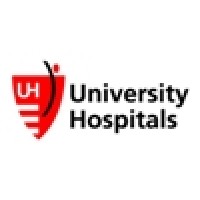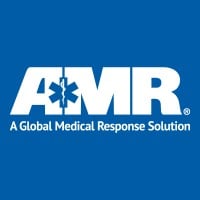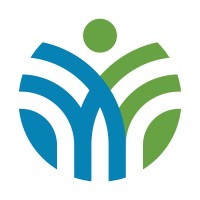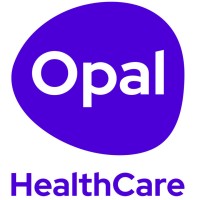
Mediclinic Company Cyber Security Posture
mediclinic.co.zaMediclinic Southern Africa is a private hospital group operating in South Africa and Namibia focused on providing acute care, specialist-orientated, multi-disciplinary hospital services and related service offerings. We place science at the heart of our care process by striving to provide evidence-based care of the highest standard. The group currently operates 53 private hospitals and five day clinics throughout South Africa and three hospitals in Namibia with more than 8 000 beds in total. Mediclinic Southern Africa is a wholly owned subsidiary of the international private healthcare group Mediclinic International PLC, listed on the LSE (London Stock Exchange) with a secondary listing on the JSE (Johannesburg Stock Exchange) and the NSX (Namibian Stock Exchange). Mediclinic International comprises 78 hospitals, five sub-acute hospitals, 13 day case clinics and 21 outpatient clinics. Hirslanden operates 18 hospitals, two day case clinics and three outpatient clinics in Switzerland with more than 1 900 inpatient beds; Mediclinic Southern Africa operates 53 hospitals, five sub-acute hospitals and nine day case clinics with more than 8 500 inpatient beds; and Mediclinic Middle East operates seven hospitals, two day case clinics and 18 outpatient clinics with more than 900 inpatient beds in the United Arab Emirates. Mediclinic also holds a 29.9% interest in Spire Healthcare Group plc, a leading private healthcare group based in the United Kingdom and listed on the LSE.
Mediclinic Company Details
mediclinic
12887 employees
192521.0
62
Hospitals and Health Care
mediclinic.co.za
Scan still pending
MED_1722124
In-progress
Between 800 and 900
This score is AI-generated and less favored by cyber insurers, who prefer the TPRM score.
 Mediclinic Global Score
Mediclinic Global Score.png)

Mediclinic Company Scoring based on AI Models
| Model Name | Date | Description | Current Score Difference | Score |
|---|---|---|---|---|
| AVERAGE-Industry | 03-12-2025 | This score represents the average cybersecurity rating of companies already scanned within the same industry. It provides a benchmark to compare an individual company's security posture against its industry peers. | N/A | Between 800 and 900 |
Mediclinic Company Cyber Security News & History
| Entity | Type | Severity | Impact | Seen | Url ID | Details | View |
|---|
Mediclinic Company Subsidiaries

Mediclinic Southern Africa is a private hospital group operating in South Africa and Namibia focused on providing acute care, specialist-orientated, multi-disciplinary hospital services and related service offerings. We place science at the heart of our care process by striving to provide evidence-based care of the highest standard. The group currently operates 53 private hospitals and five day clinics throughout South Africa and three hospitals in Namibia with more than 8 000 beds in total. Mediclinic Southern Africa is a wholly owned subsidiary of the international private healthcare group Mediclinic International PLC, listed on the LSE (London Stock Exchange) with a secondary listing on the JSE (Johannesburg Stock Exchange) and the NSX (Namibian Stock Exchange). Mediclinic International comprises 78 hospitals, five sub-acute hospitals, 13 day case clinics and 21 outpatient clinics. Hirslanden operates 18 hospitals, two day case clinics and three outpatient clinics in Switzerland with more than 1 900 inpatient beds; Mediclinic Southern Africa operates 53 hospitals, five sub-acute hospitals and nine day case clinics with more than 8 500 inpatient beds; and Mediclinic Middle East operates seven hospitals, two day case clinics and 18 outpatient clinics with more than 900 inpatient beds in the United Arab Emirates. Mediclinic also holds a 29.9% interest in Spire Healthcare Group plc, a leading private healthcare group based in the United Kingdom and listed on the LSE.
Access Data Using Our API

Get company history
.png)
Mediclinic Cyber Security News
Mediclinic targeted in alleged Everest ransomware attack
Cybersecurity researchers warn the alleged breach could expose employees to identity theft and fraud.
840k-patient per year hospital empire fights ransomware attack
Threat actors have claimed a cyber attack on major hospital empire Mediclinic, claiming to have exfiltrated data, which it threatens to publish ...
Ransomware gang hits $5B hospital chain Mediclinic
Everest ransomware gang claims it stole 4GB of data from $5.4B hospital group Mediclinic, including employee info.
Cyber Threats - Ransomware gang claims cyberattack on Mediclinic, threatens data leak
A ransomware group known as the Everest Group has claimed responsibility for a cyberattack on Mediclinic, a prominent international private ...
Mediclinic staff data breached in cyberattack on service provider
Mediclinic's employment-related data has been breached in a cybersecurity incident affecting one of its IT service providers.
Europe readies ‘action plan’ to secure hospitals from crippling cyberattacks
An incident in one organization “is a warning for all the others,” Hafkamp said. “If now a hospital in Madrid is hit by a ransomware attack, we ...
Mediclinic’s employees’ data compromised. Investigations underway
Prominent hospital group Mediclinic is investigating a cyberattack that exposed the personal information of its employees.
Prominent private hospital group in South Africa hacked
Cyber extortion gang Everest Group has claimed responsibility for an attack on Mediclinic, stating that they exfiltrated 4GB of data and the ...
'Everest Group' Extorts Global Orgs via SAP's HR Tool
Extortionist-cum-information broker "Everest Group" has pulled off a swath of attacks against large organizations in the Middle East, Africa, Europe, ...

Mediclinic Similar Companies

University Hospitals
Founded in 1866, University Hospitals serves the needs of patients through an integrated network of 23 hospitals (including 5 joint ventures), more than 50 health centers and outpatient facilities, and over 200 physician offices in 16 counties throughout northern Ohio. The system’s flagship quaterna

American Medical Response
American Medical Response, America’s leading provider of medical transportation, has a single mission: making a difference by caring for people in need. AMR solutions include 911 emergency, interfacility transportation, event medical, advanced & basic life support transports and federal disaster res

Allina Health
People at Allina Health have a career of making a difference in the lives of the millions of patients we see each year at our 90+ clinics, 12 hospitals and through a wide variety of specialty care services in Minnesota and western Wisconsin. We’re a not-for-profit organization committed to enrich

Opal Healthcare
Opal HealthCare has 133 Care Communities across Australia, offering residential aged care with services for respite, dementia care, palliative care, and rehabilitation. We have 24/7 nurse care and the hospitality of home-cooked meals in every one of our Care Communities. We understand that thinking

Penn Medicine, University of Pennsylvania Health System
Penn Medicine’s mission is to advance knowledge and improve health through research, patient care, and the education of trainees in an inclusive culture that embraces diversity, fosters innovation, stimulates critical thinking, supports lifelong learning, and sustains our legacy of excellence. Penn

Ministério da Saúde
O Ministério da Saúde é o órgão do Poder Executivo Federal responsável pela organização e elaboração de planos e políticas públicas voltados para a promoção, a prevenção e a assistência à saúde dos brasileiros. É função do Ministério dispor de condições para a proteção e recuperação da saúde da pop

Frequently Asked Questions (FAQ) on Cybersecurity Incidents
Mediclinic CyberSecurity History Information
Total Incidents: According to Rankiteo, Mediclinic has faced 0 incidents in the past.
Incident Types: As of the current reporting period, Mediclinic has not encountered any cybersecurity incidents.
Total Financial Loss: The total financial loss from these incidents is estimated to be {total_financial_loss}.
Cybersecurity Posture: The company's overall cybersecurity posture is described as Mediclinic Southern Africa is a private hospital group operating in South Africa and Namibia focused on providing acute care, specialist-orientated, multi-disciplinary hospital services and related service offerings. We place science at the heart of our care process by striving to provide evidence-based care of the highest standard. The group currently operates 53 private hospitals and five day clinics throughout South Africa and three hospitals in Namibia with more than 8 000 beds in total. Mediclinic Southern Africa is a wholly owned subsidiary of the international private healthcare group Mediclinic International PLC, listed on the LSE (London Stock Exchange) with a secondary listing on the JSE (Johannesburg Stock Exchange) and the NSX (Namibian Stock Exchange). Mediclinic International comprises 78 hospitals, five sub-acute hospitals, 13 day case clinics and 21 outpatient clinics. Hirslanden operates 18 hospitals, two day case clinics and three outpatient clinics in Switzerland with more than 1 900 inpatient beds; Mediclinic Southern Africa operates 53 hospitals, five sub-acute hospitals and nine day case clinics with more than 8 500 inpatient beds; and Mediclinic Middle East operates seven hospitals, two day case clinics and 18 outpatient clinics with more than 900 inpatient beds in the United Arab Emirates. Mediclinic also holds a 29.9% interest in Spire Healthcare Group plc, a leading private healthcare group based in the United Kingdom and listed on the LSE..
Detection and Response: The company detects and responds to cybersecurity incidents through {description_of_detection_and_response_process}.
Incident Details
Incident 1: Ransomware Attack
Title: {Incident_Title}
Description: {Brief_description_of_the_incident}
Date Detected: {Detection_Date}
Date Publicly Disclosed: {Disclosure_Date}
Date Resolved: {Resolution_Date}
Type: {Type_of_Attack}
Attack Vector: {Attack_Vector}
Vulnerability Exploited: {Vulnerability}
Threat Actor: {Threat_Actor}
Motivation: {Motivation}
Incident 2: Data Breach
Title: {Incident_Title}
Description: {Brief_description_of_the_incident}
Date Detected: {Detection_Date}
Date Publicly Disclosed: {Disclosure_Date}
Date Resolved: {Resolution_Date}
Type: {Type_of_Attack}
Attack Vector: {Attack_Vector}
Vulnerability Exploited: {Vulnerability}
Threat Actor: {Threat_Actor}
Motivation: {Motivation}
Common Attack Types: As of now, the company has not encountered any reported incidents involving common cyberattacks.
Identification of Attack Vectors: The company identifies the attack vectors used in incidents through {description_of_identification_process}.
Impact of the Incidents
Incident 1: Ransomware Attack
Financial Loss: {Financial_Loss}
Data Compromised: {Data_Compromised}
Systems Affected: {Systems_Affected}
Downtime: {Downtime}
Operational Impact: {Operational_Impact}
Conversion Rate Impact: {Conversion_Rate_Impact}
Revenue Loss: {Revenue_Loss}
Customer Complaints: {Customer_Complaints}
Brand Reputation Impact: {Brand_Reputation_Impact}
Legal Liabilities: {Legal_Liabilities}
Identity Theft Risk: {Identity_Theft_Risk}
Payment Information Risk: {Payment_Information_Risk}
Incident 2: Data Breach
Financial Loss: {Financial_Loss}
Data Compromised: {Data_Compromised}
Systems Affected: {Systems_Affected}
Downtime: {Downtime}
Operational Impact: {Operational_Impact}
Conversion Rate Impact: {Conversion_Rate_Impact}
Revenue Loss: {Revenue_Loss}
Customer Complaints: {Customer_Complaints}
Brand Reputation Impact: {Brand_Reputation_Impact}
Legal Liabilities: {Legal_Liabilities}
Identity Theft Risk: {Identity_Theft_Risk}
Payment Information Risk: {Payment_Information_Risk}
Average Financial Loss: The average financial loss per incident is {average_financial_loss}.
Commonly Compromised Data Types: The types of data most commonly compromised in incidents are {list_of_commonly_compromised_data_types}.
Incident 1: Ransomware Attack
Entity Name: {Entity_Name}
Entity Type: {Entity_Type}
Industry: {Industry}
Location: {Location}
Size: {Size}
Customers Affected: {Customers_Affected}
Incident 2: Data Breach
Entity Name: {Entity_Name}
Entity Type: {Entity_Type}
Industry: {Industry}
Location: {Location}
Size: {Size}
Customers Affected: {Customers_Affected}
Response to the Incidents
Incident 1: Ransomware Attack
Incident Response Plan Activated: {Yes/No}
Third Party Assistance: {Yes/No}
Law Enforcement Notified: {Yes/No}
Containment Measures: {Containment_Measures}
Remediation Measures: {Remediation_Measures}
Recovery Measures: {Recovery_Measures}
Communication Strategy: {Communication_Strategy}
Adaptive Behavioral WAF: {Adaptive_Behavioral_WAF}
On-Demand Scrubbing Services: {On_Demand_Scrubbing_Services}
Network Segmentation: {Network_Segmentation}
Enhanced Monitoring: {Enhanced_Monitoring}
Incident 2: Data Breach
Incident Response Plan Activated: {Yes/No}
Third Party Assistance: {Yes/No}
Law Enforcement Notified: {Yes/No}
Containment Measures: {Containment_Measures}
Remediation Measures: {Remediation_Measures}
Recovery Measures: {Recovery_Measures}
Communication Strategy: {Communication_Strategy}
Adaptive Behavioral WAF: {Adaptive_Behavioral_WAF}
On-Demand Scrubbing Services: {On_Demand_Scrubbing_Services}
Network Segmentation: {Network_Segmentation}
Enhanced Monitoring: {Enhanced_Monitoring}
Incident Response Plan: The company's incident response plan is described as {description_of_incident_response_plan}.
Third-Party Assistance: The company involves third-party assistance in incident response through {description_of_third_party_involvement}.
Data Breach Information
Incident 2: Data Breach
Type of Data Compromised: {Type_of_Data}
Number of Records Exposed: {Number_of_Records}
Sensitivity of Data: {Sensitivity_of_Data}
Data Exfiltration: {Yes/No}
Data Encryption: {Yes/No}
File Types Exposed: {File_Types}
Personally Identifiable Information: {Yes/No}
Prevention of Data Exfiltration: The company takes the following measures to prevent data exfiltration: {description_of_prevention_measures}.
Handling of PII Incidents: The company handles incidents involving personally identifiable information (PII) through {description_of_handling_process}.
Ransomware Information
Incident 1: Ransomware Attack
Ransom Demanded: {Ransom_Amount}
Ransom Paid: {Ransom_Paid}
Ransomware Strain: {Ransomware_Strain}
Data Encryption: {Yes/No}
Data Exfiltration: {Yes/No}
Ransom Payment Policy: The company's policy on paying ransoms in ransomware incidents is described as {description_of_ransom_payment_policy}.
Data Recovery from Ransomware: The company recovers data encrypted by ransomware through {description_of_data_recovery_process}.
Regulatory Compliance
Incident 1: Ransomware Attack
Regulations Violated: {Regulations_Violated}
Fines Imposed: {Fines_Imposed}
Legal Actions: {Legal_Actions}
Regulatory Notifications: {Regulatory_Notifications}
Incident 2: Data Breach
Regulations Violated: {Regulations_Violated}
Fines Imposed: {Fines_Imposed}
Legal Actions: {Legal_Actions}
Regulatory Notifications: {Regulatory_Notifications}
Regulatory Frameworks: The company complies with the following regulatory frameworks regarding cybersecurity: {list_of_regulatory_frameworks}.
Ensuring Regulatory Compliance: The company ensures compliance with regulatory requirements through {description_of_compliance_measures}.
Lessons Learned and Recommendations
Incident 1: Ransomware Attack
Lessons Learned: {Lessons_Learned}
Incident 2: Data Breach
Lessons Learned: {Lessons_Learned}
Incident 1: Ransomware Attack
Recommendations: {Recommendations}
Incident 2: Data Breach
Recommendations: {Recommendations}
Key Lessons Learned: The key lessons learned from past incidents are {list_of_key_lessons_learned}.
Implemented Recommendations: The company has implemented the following recommendations to improve cybersecurity: {list_of_implemented_recommendations}.
References
Additional Resources: Stakeholders can find additional resources on cybersecurity best practices at {list_of_additional_resources}.
Investigation Status
Incident 1: Ransomware Attack
Investigation Status: {Investigation_Status}
Incident 2: Data Breach
Investigation Status: {Investigation_Status}
Communication of Investigation Status: The company communicates the status of incident investigations to stakeholders through {description_of_communication_process}.
Stakeholder and Customer Advisories
Incident 1: Ransomware Attack
Stakeholder Advisories: {Stakeholder_Advisories}
Customer Advisories: {Customer_Advisories}
Incident 2: Data Breach
Stakeholder Advisories: {Stakeholder_Advisories}
Customer Advisories: {Customer_Advisories}
Advisories Provided: The company provides the following advisories to stakeholders and customers following an incident: {description_of_advisories_provided}.
Initial Access Broker
Incident 1: Ransomware Attack
Entry Point: {Entry_Point}
Reconnaissance Period: {Reconnaissance_Period}
Backdoors Established: {Backdoors_Established}
High Value Targets: {High_Value_Targets}
Data Sold on Dark Web: {Yes/No}
Incident 2: Data Breach
Entry Point: {Entry_Point}
Reconnaissance Period: {Reconnaissance_Period}
Backdoors Established: {Backdoors_Established}
High Value Targets: {High_Value_Targets}
Data Sold on Dark Web: {Yes/No}
Monitoring and Mitigation of Initial Access Brokers: The company monitors and mitigates the activities of initial access brokers through {description_of_monitoring_and_mitigation_measures}.
Post-Incident Analysis
Incident 1: Ransomware Attack
Root Causes: {Root_Causes}
Corrective Actions: {Corrective_Actions}
Incident 2: Data Breach
Root Causes: {Root_Causes}
Corrective Actions: {Corrective_Actions}
Post-Incident Analysis Process: The company's process for conducting post-incident analysis is described as {description_of_post_incident_analysis_process}.
Corrective Actions Taken: The company has taken the following corrective actions based on post-incident analysis: {list_of_corrective_actions_taken}.
Additional Questions
General Information
Ransom Payment History: The company has {paid/not_paid} ransoms in the past.
Last Ransom Demanded: The amount of the last ransom demanded was {last_ransom_amount}.
Last Attacking Group: The attacking group in the last incident was {last_attacking_group}.
Incident Details
Most Recent Incident Detected: The most recent incident detected was on {most_recent_incident_detected_date}.
Most Recent Incident Publicly Disclosed: The most recent incident publicly disclosed was on {most_recent_incident_publicly_disclosed_date}.
Most Recent Incident Resolved: The most recent incident resolved was on {most_recent_incident_resolved_date}.
Impact of the Incidents
Highest Financial Loss: The highest financial loss from an incident was {highest_financial_loss}.
Most Significant Data Compromised: The most significant data compromised in an incident was {most_significant_data_compromised}.
Most Significant System Affected: The most significant system affected in an incident was {most_significant_system_affected}.
Response to the Incidents
Third-Party Assistance in Most Recent Incident: The third-party assistance involved in the most recent incident was {third_party_assistance_in_most_recent_incident}.
Containment Measures in Most Recent Incident: The containment measures taken in the most recent incident were {containment_measures_in_most_recent_incident}.
Data Breach Information
Most Sensitive Data Compromised: The most sensitive data compromised in a breach was {most_sensitive_data_compromised}.
Number of Records Exposed: The number of records exposed in the most significant breach was {number_of_records_exposed}.
Ransomware Information
Highest Ransom Demanded: The highest ransom demanded in a ransomware incident was {highest_ransom_demanded}.
Highest Ransom Paid: The highest ransom paid in a ransomware incident was {highest_ransom_paid}.
Regulatory Compliance
Highest Fine Imposed: The highest fine imposed for a regulatory violation was {highest_fine_imposed}.
Most Significant Legal Action: The most significant legal action taken for a regulatory violation was {most_significant_legal_action}.
Lessons Learned and Recommendations
Most Significant Lesson Learned: The most significant lesson learned from past incidents was {most_significant_lesson_learned}.
Most Significant Recommendation Implemented: The most significant recommendation implemented to improve cybersecurity was {most_significant_recommendation_implemented}.
References
Most Recent Source: The most recent source of information about an incident is {most_recent_source}.
Most Recent URL for Additional Resources: The most recent URL for additional resources on cybersecurity best practices is {most_recent_url}.
Investigation Status
Current Status of Most Recent Investigation: The current status of the most recent investigation is {current_status_of_most_recent_investigation}.
Stakeholder and Customer Advisories
Most Recent Stakeholder Advisory: The most recent stakeholder advisory issued was {most_recent_stakeholder_advisory}.
Most Recent Customer Advisory: The most recent customer advisory issued was {most_recent_customer_advisory}.
Initial Access Broker
Most Recent Entry Point: The most recent entry point used by an initial access broker was {most_recent_entry_point}.
Most Recent Reconnaissance Period: The most recent reconnaissance period for an incident was {most_recent_reconnaissance_period}.
Post-Incident Analysis
Most Significant Root Cause: The most significant root cause identified in post-incident analysis was {most_significant_root_cause}.
Most Significant Corrective Action: The most significant corrective action taken based on post-incident analysis was {most_significant_corrective_action}.
What Do We Measure?
















Every week, Rankiteo analyzes billions of signals to give organizations a sharper, faster view of emerging risks. With deeper, more actionable intelligence at their fingertips, security teams can outpace threat actors, respond instantly to Zero-Day attacks, and dramatically shrink their risk exposure window.
These are some of the factors we use to calculate the overall score:
Identify exposed access points, detect misconfigured SSL certificates, and uncover vulnerabilities across the network infrastructure.
Gain visibility into the software components used within an organization to detect vulnerabilities, manage risk, and ensure supply chain security.
Monitor and manage all IT assets and their configurations to ensure accurate, real-time visibility across the company's technology environment.
Leverage real-time insights on active threats, malware campaigns, and emerging vulnerabilities to proactively defend against evolving cyberattacks.




